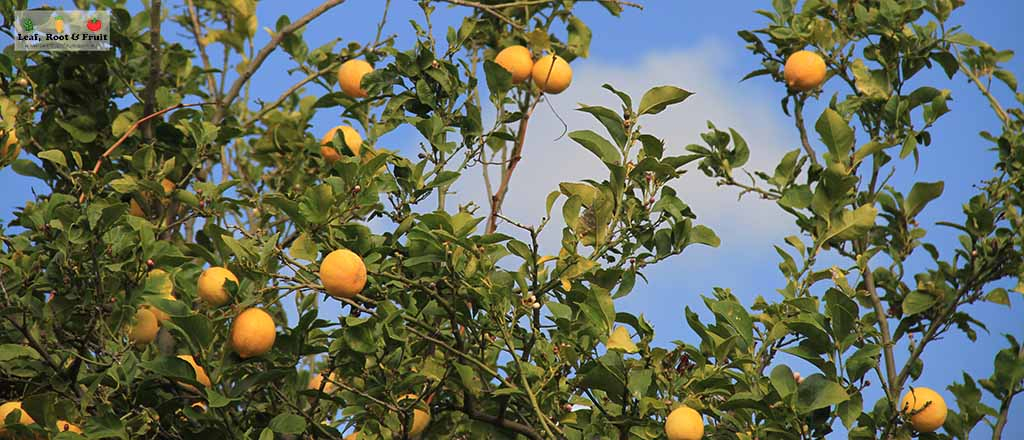
In Melbourne, spring and summer are particularly critical for citrus trees. Care or lack of it, during this period will determine tree health, size and quality of citrus fruit crops.
Soil management
Citrus trees have very shallow root systems so never cultivate or disturb the soil under the tree. Chickens and fruit trees, especially citrus trees don’t mix well for extended periods of time. Avoid allowing chickens to dust bathe and forage under citrus trees.
Maintain a 5-10 cm deep straw or wood chip mulching. Keep the mulch clear of the trunk to minimise the danger of trunk or collar rot.
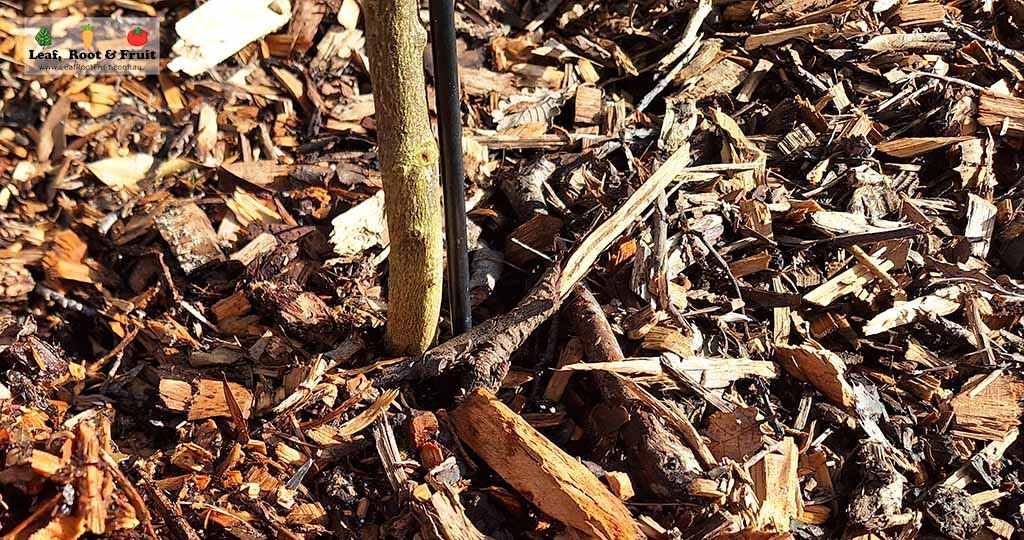
Using woody mulches such as bark and wood chips can cause nitrogen draw down, which could starve the tree. I like using arborist’s wood chips, as they tend to have more nitrogen availability. I also add plenty of compost prior to spreading the wood chips. Seasonal applications of a nitrogen rich compost or fertiliser also help offset any issues from wood chip mulches.
Watering citrus trees
Citrus trees perform best with uniform moisture in their root zone from September through to April. Water requirements can be hundreds of litres for a large tree in summer. See the table below for recommended quantities. I recommend watering citrus trees with drip irrigation. The dripper line should be placed under any mulch applied to the trees.
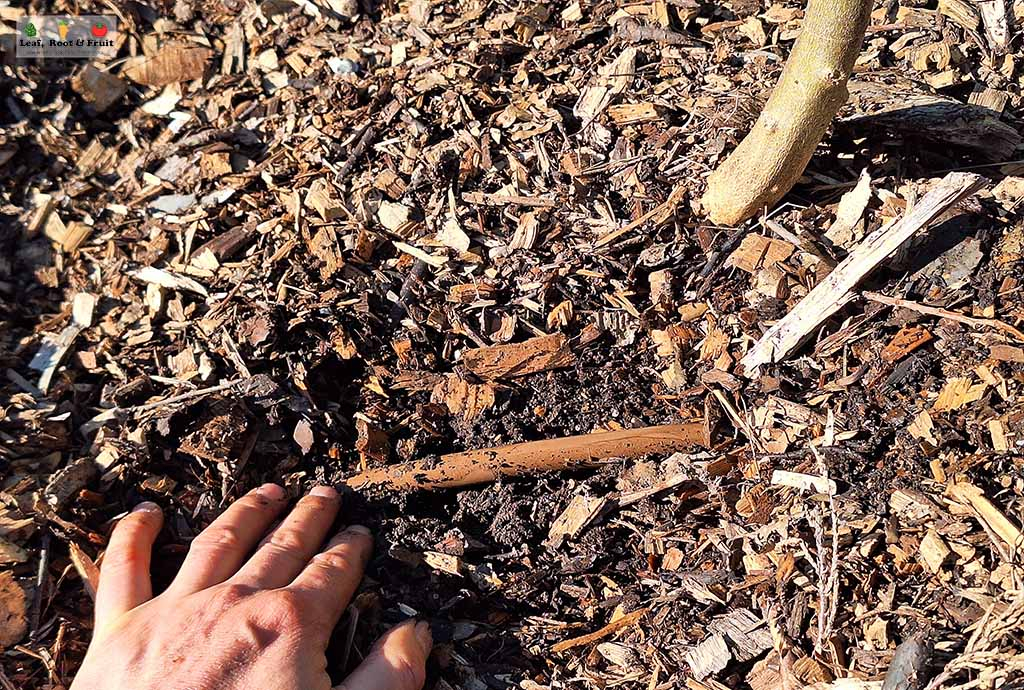
inimum weekly water requirements (litres), for well mulched citrus trees, watered at night or first thing in the morning through drip irrigation. Given annual rainfall of 500-700 mm and a dry summer. Tree size is average height and width in metres.

Source: Mophett & Tolley: Citrus, A Gardener’s Guide, 2009
Fertilising citrus trees
Citrus trees have a high demand for nutrients. The more you feed citrus trees, the more fruit they will produce. “A little, often” is the key to maintaining consistently good soil nutrient levels.
Adequate amounts of all the essential nutrients, in correct proportions are necessary to grow healthy trees, and produce quality fruit. Fertilising of sandy soils must be carefully watched as nutrients are readily leached out of the root zone by rainfall and watering.
Citrus fertilisers for the home gardener can include blood and bone (with added potash), poultry manure (pelletised or well-rotted), compost or a commercially formulated citrus food. Check out my fertiliser trial to see which fertilisers might be best for your citrus trees. Urine is full of nitrogen and great for growing healthy and productive trees. Yes, you should wee on the ground under your citrus trees to help make them more productive!
Traditionally you should apply nitrogen rich fertilisers, especially in the spring and early summer period (mid-September to mid-December). However, I’m noticing an increased susceptibility to Citrus Gall Wasp when trees are fed in spring. Take a look at my citrus gall wasp blog post for more information on this.
Do not fertilize after February, as this will stimulate leaf growth into autumn and winter. This makes the tree susceptible to frost damage and infestation with citrus leafminer (see Part Five for more on this)
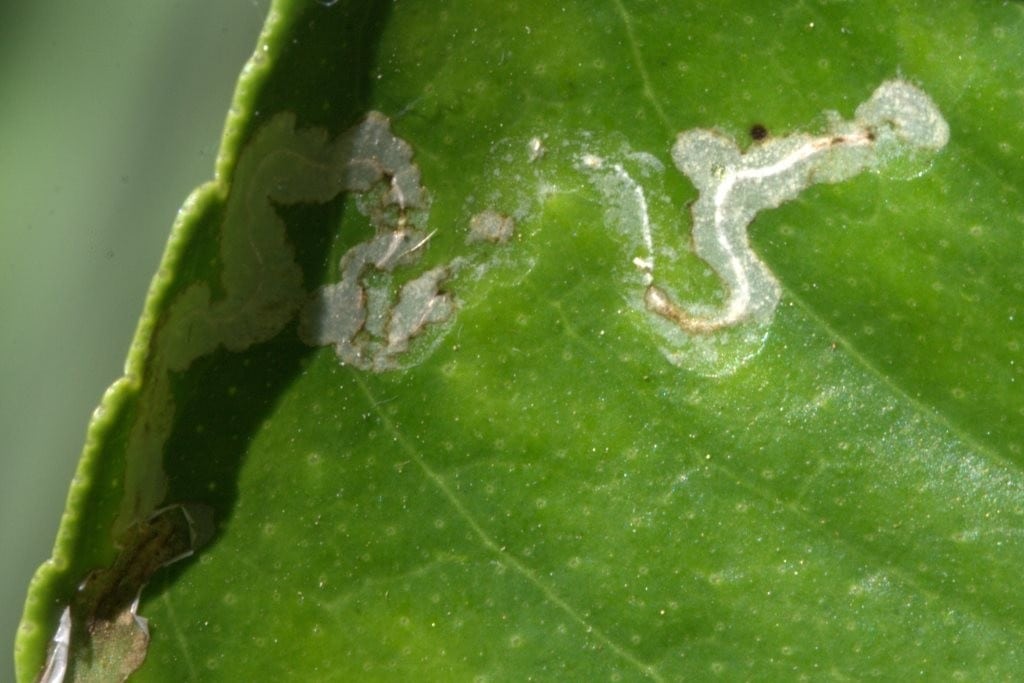
Harvesting citrus fruit
Most citrus grown in Melbourne will ripen in around 12 months from flowering. See Part One for a ripening chart.
Some fruit keep their condition on the tree for months after they have ripened. Others, such as mandarins lose peak condition quickly and can become coarse, dry, puffy or poorly flavoured. Fruit picked under-ripe does not continue to mature off the tree. However taste may become sweeter after storage. Taste test remains the best indicator of fruit ripening.
Harvesting should be performed with care. Snip the fruit from the tree, rather than pulling or twisting. This will minimise the potential for disease entry to both the tree and the fruit.
Traditionally all fruit should be removed from the tree for the first 3 to 4 years to avoid over working the tree. However, that’s no fun and I’m a little less strict on this. I allow the tree to set some fruit, but thin the number to achieve a balance between tree growth and early productivity.
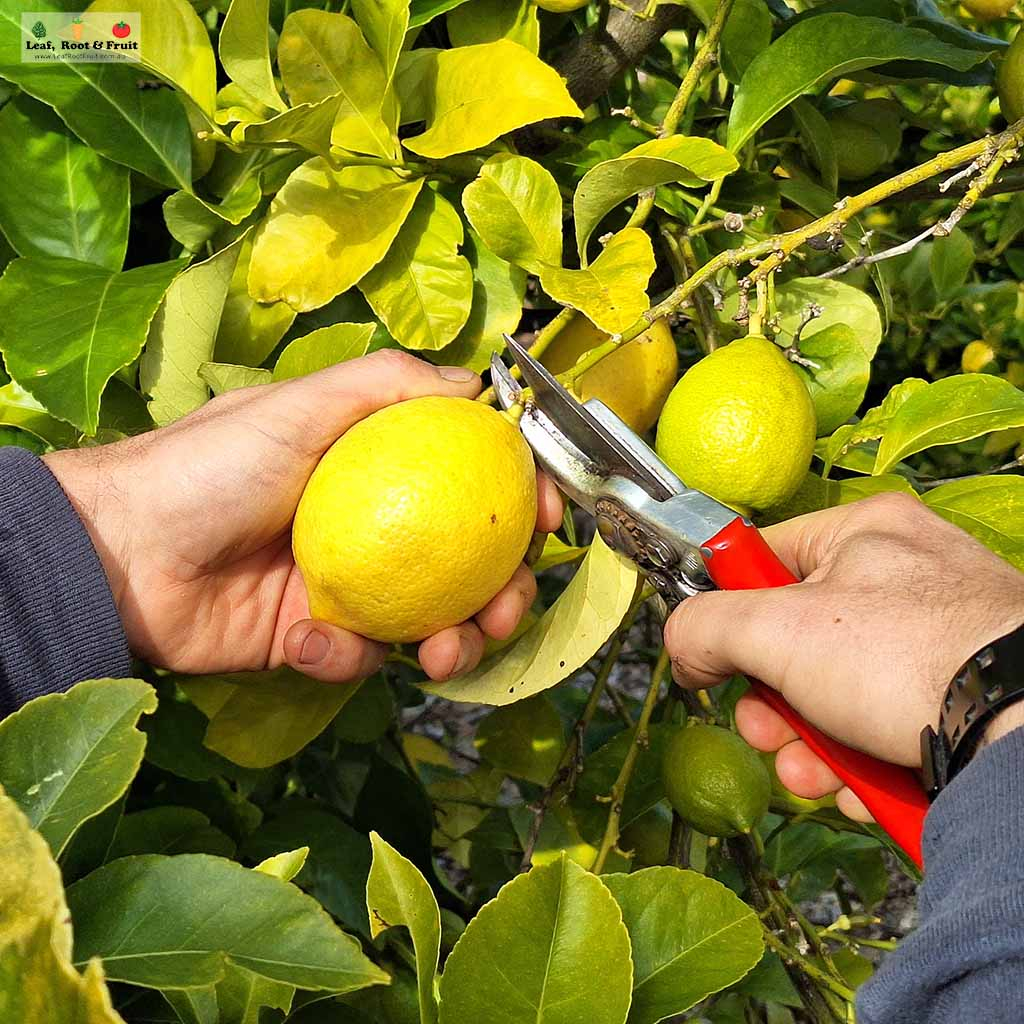
Want to know more about Growing Citrus in Melbourne?
This is Part 3 of a 5 part guide to growing citrus in Melbourne. The links below will take you to the other four parts of my Melbourne citrus growing guide.
Citrus Growing Guide Part 1: Citrus Varieties for Melbourne
Citrus Growing Guide Part 2: Where and How to Plant Your Citrus Tree
Citrus Growing Guide Part 4: Pruning and Shaping of Citrus Trees
Citrus Growing Guide Part 5: Citrus Pests, Diseases and Problems in Melbourne
My citrus growing guides are based on my own experience, as well as the following books. They are all invaluable resources for the home gardener based in Melbourne. I strongly recommend you have a read of them, if you want to know more about growing citrus in Melbourne:
Ian Tolley: Commonsense Citrus, 2017
Bruce Mophett & Ian Tolley: Citrus, A Gardener’s Guide, 2009.
Louis Glowinski: The Complete Book of Fruit Growing in Australia, 1997.


Is it to late now to prune my dwarf meyer lemon its only 4yrs old it’s producing some fruit but has never ripened any ideas would be appreciated.thanks
Hi Marcus,
It’s best to prune citrus (with hedge trimmers) straight after you pick the fruit. Meyer lemons should start to ripen in the coming weeks. Hopefully yours will soon also.
Good Luck & Happy Gardening!
Duncan
Hi we have a lemon tree and lime tree. The yard has been re-turfed. Trees have lost all leaves. They have been pruned yesterday.
On investigation the both trees are waterlogged. Dug down about a foot and there is water laying there.
Help, what can we do to save our trees???
Hi Jillian,
Thanks for getting in touch. Without knowing more about the situation it is difficult for me to advise. Your trees have obviously been under a lot of stress lately, and they don’t cope at all well with stress. Citrus trees need good drainage, you’ll need to either improve the drainage or move the trees to a new site that has better drainage. Citrus trees are shallow rooted, so perhaps when the old turf was removed, too many of the citrus roots were also removed/disturbed. They are normally pretty good with pruning and can handle a good cut back, but this on top of the other issues may have stressed it further.
Good luck with them
Duncan